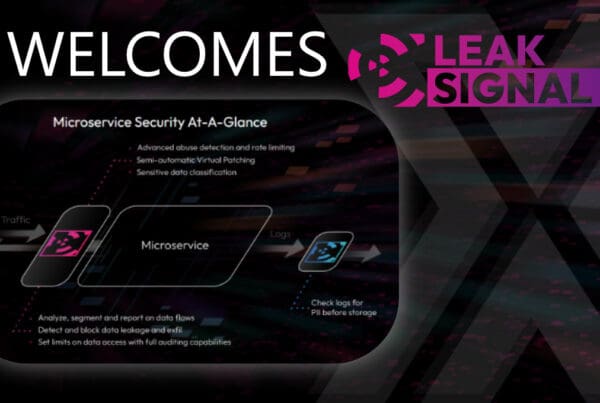22 Years of Technology, Innovation, Learning, Gaps, and Opportunities
By: Brandon Shelton, Managing Partner
On this 22nd anniversary of the terrorist attacks of 9/11 we give pause and reflect on all that has happened in these two-plus decades since. I was an active duty Army Infantry officer with the 173rd Airborne Brigade Combat Team on that fateful day, and our unit was 24 hours out from entering “the box” in Germany for wargames. As we moved to a full alert status later that day, I remember members of our unit waiting to see the pictures which we were hearing about (we didn’t have internet or TVs in our isolation area). When we finally saw the Towers fall there was absolute shock coupled with sadness and anger. To go from a peacetime military to a war footing in just hours was surreal. That attack was abrupt, and all of a sudden, we were at war. Currently, one could argue that we are slowly moving towards a major conflict with the CCP – so without being attacked, where and how should innovation funds be invested?
In the hours and days that followed my unit wanted information as fast as possible— we didn’t have iPhones, 5G, social media, GoogleEarth, etc. I remember one of our Air Force Special Operations leaders talking about Afghanistan—where was that I thought? And how do I get a map of this place? He responded that I had to use the Air Force’s then-classified system called FalconView (via NGIA) to see what I can now access on my phone in an instant.
A year later Congress would start the Army Venture Capital Corporation (AVCC) as a non-profit means for the Department of Defense to accelerate innovation and connectivity to Silicon Valley. It was initially allocated only $25M and never really scaled in the two decades that followed. At that time the size of the US VC market was around $20B in 2002, DoD’s fiscal budget was $349B (Research, Development, Test, and Evaluation Appropriation (RDT&E) aka Innovation was $121M), and the size of the active military force was 1.47M servicemembers. For comparison purposes the US VC market was approximately $200B in 2022 (down from $300B in 2021), DoD’s fiscal budget for FY23 is $800B+ (RDT&E at $130B+), and the size of the active military force is around 1.3M. The DoD Innovation budget has grown an astounding 1,074x since 9/11 despite the force staying relatively the same! The recruitment challenges for the US military seem to be growing just to maintain current force levels, let alone drive a major increase in the all-volunteer force if and when called to war again.
The AVCC program floundered for a long time before being restarted in 2022. And since 2013 we’ve witnessed the formation and growth of “Defense Innovation” entities such as: SOFWERX, AFWERX, DIU, NSIN, NAVALX, etc. And in late 2022 the Secretary of Defense announced the formation of the Office of Strategic Capital (OSC). In 2023 NATO took a step forward with a 1BN Euro investment fund. But are all of these efforts creating the right “windows” for small, often venture-backed startups to cross level their tech into fungible and practical solutions for the warfighter? From my venture investor seat I would say not yet. To this day the majority of the DoD’s annual budget is paid to just a handful of large, defense companies. In May of this year CBS News detailed the problems with many of these multi-year, large item innovations such as the F-35 as well as sole-source supply chains associated with large, defense companies.
Recently Mike Brown, former DIU lead and Partner at Shield Capital, co-authored a great article connecting national security innovation and investing as a balance to adversaries such as China. He comments
“Today, there is an opportunity for the Defense Department to recover that tradition, creating a strong industrial base relative to China through early investment and the adoption of technologies in which the government remains the principal customer.”
So how does DoD compliantly and efficiently import software or hardware technology being built by a 5-person company with 6 months of cash runway and constant investor demands?
The newly formed Office of Strategic Capital (OSC) is working to bridge the gap between Venture and PE Funds with DoD’s 14 Emerging Critical Technologies (see chart below). The first initiative is via the Small Business Administration (SBA)’s Small Business Investment Company (SBIC) program. Historically, the SBIC program focused on PE funds over venture funds because of the high portfolio company failure rates and the US of non-interest-bearing instruments such as SAFE notes or priced equity. Recently, the SBA has worked with the newly formed OSC to make changes with the SBIC mechanics which look favorable, but we’ll see how many VC funds pass muster. Dr. Rathje is smart and knows how the sausage is made in DC; we’ve raised our hands to help as they ready their investment strategy to be published later this year.

From a mindset standpoint it’s great to see folks like GEN Kurilla, CENTCOM Commander and one of my bosses on 9/11 in Europe, host innovation pitch competitions from inside the active force. Can we build on initiatives like this and get lower-level commanders connected with commercial technology in an agile, continuous learning partnership but stay within procurement rules?
And this Summer we saw NATO come together to leverage capital, knowledge and geographical reach to accelerate innovation, but with a political caveat: the fund cannot invest in startups based in the US because the US declined to participate in the 1BN Euro fund. This will undoubtedly impair the success of the fund given the sheer volume of technology, research and venture activity the US has historically offered. The US has attracted 50-60% of global venture investments annually for the past 10 years.
I’m personally rooting for all of these initiatives to work so here are three additional ideas to throw into the mix:
- Commanders are Customers. Each O-6 (Colonel) in the military goes through a pre-command school before taking over a ship, air wing, department, field unit, etc. (Something that every SVP or EVP in corporate America would benefit from). In that command they will have full budget accountability for thousands of employees, their equipment, training expenses, maintenance, etc. Why not allocate $500k per O-6 Command for commercial pilots or Proofs of Concept (POC) with startups? This would create hundreds of potential customer entry points for startups much like they have with Fortune 500 companies who have the same budget discretion (usually). The startup doesn’t need to integrate into DoD cloud or other security protocols to run the pilot. If the POC is successful at that O-6 unit and within their two year command duration, then there is a fixed, three follow-on SaaS-like contract that can happen with rapid procurement approval. Said another way, the US Army is not one customer, rather, they could be 31 customers (Combat Brigades, units that an O-6 would lead). And the US Navy would be arguably 400 customers (300 Ships plus 75 Air Squadrons). Yes, I know there are many perils to having O-6’s dilute their already busy schedules to hear startup pitches or field sales calls, but the benefits may outweigh the costs.
- Trusted General Partners at VC Funds. Perhaps OSC could identify 25-50, US-based, early stage VC firms (like TFX Capital) to participate in a Partnership program with DoD. The General Partners would need to undergo security clearance background checks and sign legal affidavits attesting to the nature and nationalities of their LPs (sorry to those who raise capital from oligarchs or otherwise). OSC could secure video calls quarterly (some in person near the operational units) to update GPs on what DoD is looking for. In return the GPs can recruit portfolio companies and/or advise existing portfolio companies to apply through a standalone, partnership door for potential use cases and ultimately contracts.
- Expand DoD Civilian software engineering roles deployed to Brigade level. We are seeing more of these roles expand at the Corps and Division levels but having real-time, hardware/software engineering capabilities closer to the warfighter (end user) has proven quite successful in Ukraine. The goal is to increase the speed of innovation and hopefully lower the costs of technologies. They can act as technology scouts as well as translate feedback from the field to the startup.
Prior to 9/11 we relied heavily on great organizations like DARPA for decades to pioneer new ideas and concepts. And over the past 22 years our country has certainly spent a lot of time and capital in search of innovative hardware and software tools and solutions to fight the Global War on Terror, build force projection capabilities, and deter various threat actors.
And over the past 10 years we’ve seen a growing number of advocates within the defense and venture industries pushing for better and smarter connectivity to emerging technologies, startups, and the entrepreneurial ecosystem. I cheer these efforts and more, but gaps remain for connecting startups to national security customers and end users. If India can land a rover on the Moon for the publicized cost of $70M, then why can’t we do better with the talent, treasure and technology here in the US?
We can and we will.




